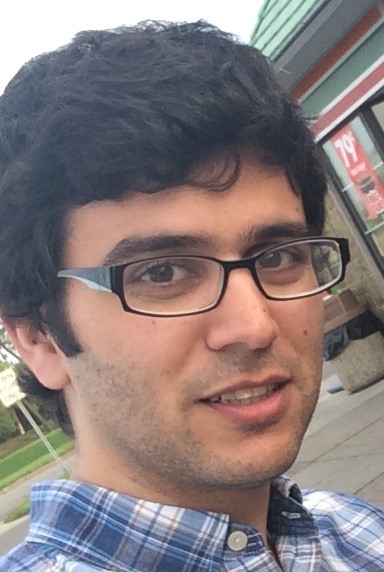University of Chicago, Haslekorn’s lab, Dpt of Molecular Genetics and Cell Biology Requirement of Fra proteins for communication channels between cells in the filamentous nitrogen-fixing cyanobacterium Anabaena sp. PCC 7120. Proc Natl Acad Sci U S A. Aug 11;112(32): E4458-64 Omairi-Nasser, A, Mariscal, V, Austin, J, and Haselkorn, R (2015)
Cv
J’ai 30 ans. J’ai effectué ma thèse au CEA de Saclay, sous la direction de Ghada Ajlani, où j’ai étudié la régulation transcriptionnelle et traductionnelle des deux isoformes de la ferredoxine NADP oxidoreductase chez la cyanobactérie Synechocystis sp. PCC6803. En 2012, j’ai commencé un Post-doctorat dans le laboratoire du Prof. Robert Haselkorn à l’Université de Chicago. Je me suis intéressé à la communication cellulaire chez la cyanobactérie filamenteuse et fixatrice d’azote, Anabaena sp. PCC7120. En janvier 2016, j’ai commencé un nouveau postdoc au laboratoire de Gregory Boël à l’IBPC, à Paris. Je m’intéresse à l’implication des protéines appartenant à la famille des transporteurs ABC dans la traduction chez les cyanobactéries.
Contact
Institut de Biologie Physico-Chimique (IBPC)
13 Rue Pierre et Marie Curie
75005 Paris
Cette adresse e-mail est protégée contre les robots spammeurs. Vous devez activer le JavaScript pour la visualiser.
Résumé de l'article
The filamentous nitrogen-fixing cyanobacterium Anabaena sp. PCC 7120 differentiates specialized cells, heterocysts, that fix atmospheric nitrogen and transfer the fixed nitrogen to adjacent vegetative cells. Reciprocally, vegetative cells transfer fixed carbon to heterocysts. Several routes have been described for metabolite exchange within the filament, one of which involves communicating channels that penetrate the septum between adjacent cells. Several fra gene mutants were isolated 25 years ago on the basis of their phenotypes: inability to fix nitrogen and fragmentation of filaments upon transfer from N+ to N- media. Cryopreservation combined with electron tomography, were used to investigate the role of three fra gene products in channel formation. We show that FraC and FraG are clearly involved in channel formation while FraD has a minor part. Additionally, FraG was located close to the cytoplasmic membrane and in the heterocyst neck, using immunogold labeling with antibody raised to the N-terminal domain of the FraG protein.




